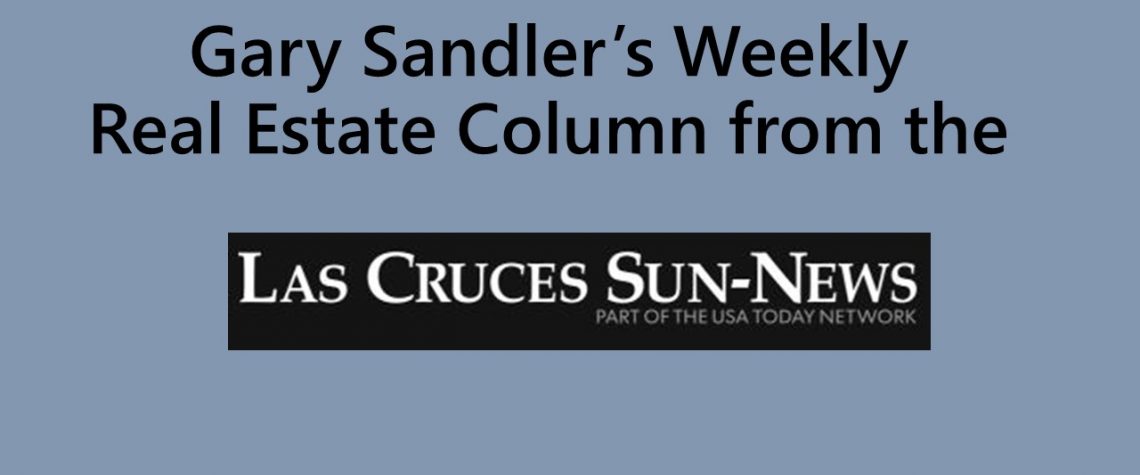-
 Jul 25, 2016 Is now the time to refinance?
Jul 25, 2016 Is now the time to refinance?Published July 25, 2016
It’s no secret that mortgage interest rates are at historic lows. Freddie Mac reported last week that the average conventional 30-year and 15-year mortgage rates were 3.42 percent and 2.74% respectively. As a result of this enticing news, refinancing is on the minds of many Las Cruces homeowners. The decision to take the plunge is a highly personal matter, however, and is specific to each borrower’s situation.
Take, for example, the saga of the regular reader of this column who phoned me a few days ago to ask if the time is right for him to dive into the process. Since there is no such thing as a “one size fits all” answer, the first order of business was to identify the reason for his contemplated action.
MOTIVATION: Typically, there are three reasons people choose to redo their loans: Reduced their monthly payment, reduce the term of their loan, or generate cash for planned or emergency expenses such as health issues, financing college costs, adding to or remodeling a home, or paying off high-cost debt. Our homeowner’s motivation is to reduce his mortgage obligations as he moves further into retirement. But that’s just the beginning of what he has to consider.
COST: One of the main considerations is how much the process will cost and how long it will take to recoup the investment. Our reader’s $185,000 loan carries an interest rate of 4.875 percent. If he were to refinance today at 3.42%, he would reduce his interest cost by about 1.46% or $1,241 annually. If the price tag to do the deal is, say, $2,800, he would recoup his investment in about 28-months. If he remains in the property for at least that amount of time, he wins. If he leaves prior to that time, the switch may not be worth the cost.
TERM: Our homeowner took out his current loan about 5 years ago, leaving 25 years remaining on the balance. If he were to refinance into another 30-year loan, he will, in effect, add 5 years to his original mortgage. Since his goal is to reduce his mortgage obligations, not extend them, he’s better off exchanging his 30-year loan for a new 20-year product – instantly reducing his mortgage term by an additional 5-years. Because the new interest rate is significantly lower than his current rate, his principal and interest payment rises by only $86 per month.
EQUITY: Our reader has lived in his home for quite a while, giving him the equity he needs to satisfy lender requirements. Equity is the difference between the value of a home and the amount owed against it. Our borrower will have a much easier time obtaining a loan because he has at least 20% equity – meaning that he will ask to borrow no more than 80% of the value of his home. If he had less than 20% equity, his cost to obtain the loan could rise, perhaps offsetting, reducing, or eliminating the benefits the refinance would have provided.
TAX BENEFITS: This is where things get personal. Income tax deductions brought about by paying less mortgage interest could have a measurable effect on one’s tax picture, so our homeowner would be wise to check with a tax professional or online site such as www.bankrate.com to determine to what extent, if any, the refinance will impact his tax obligations.
It is also important that our refinance shopper do his due diligence and shop carefully for his new loan. Not all shoe stores carry the same shoes, and not all lenders carry the same loans. And even if two shoe stores happen to carry the same products, they may not offer them at the same price. The same holds true for lenders.
Finally, qualifying guidelines vary from institution-to-institution, so don’t take the word of just one lender. I’ve personally worked with buyers who have been told by Lender “A” that they don’t qualify, only to be told by Lender “B” that they’re as good as gold.
See you at closing.
About author
-
-
About Author
Gary Sandler
-
© 2022 Gary Sandler - Website Developed by: Digital Solutions